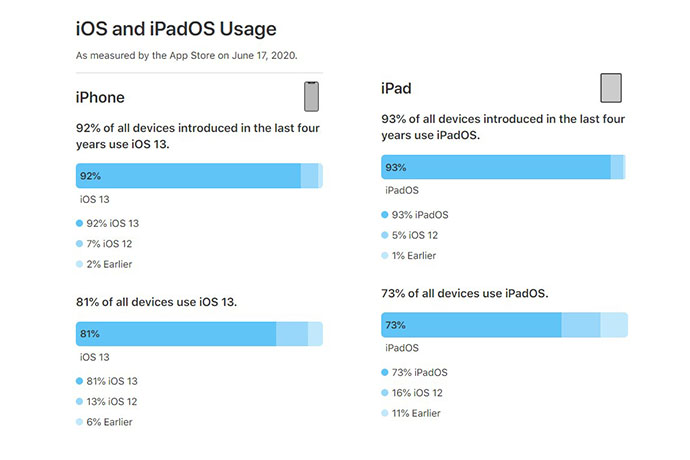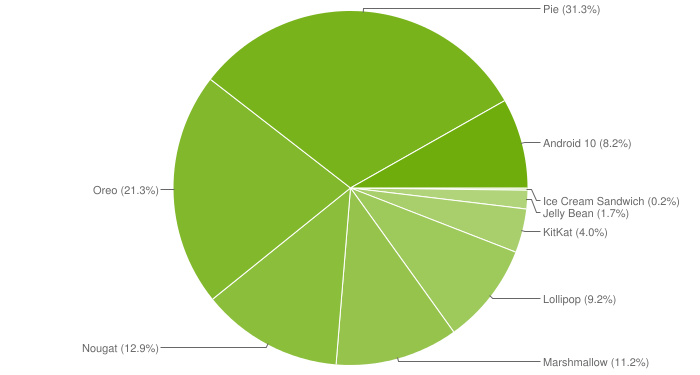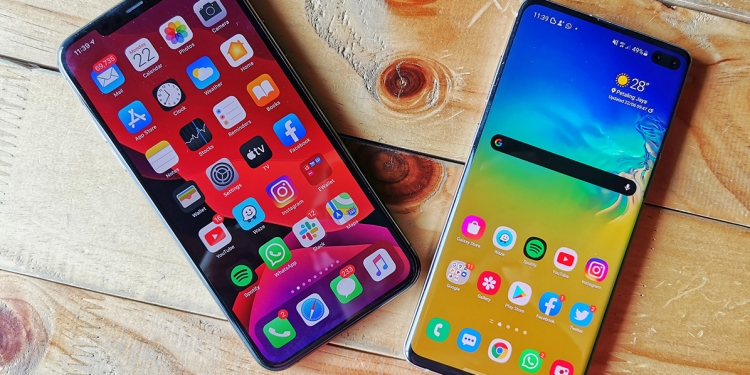Apple recently posted figures on its developer website that showed 81% of iPhones use iOS 13. By contrast, according to numbers released in April, only 8.2% of all Android phones are running on the latest version of Android, Android 10.
These numbers are not surprising given as Apple makes both the hardware and the software for its various devices from the iPhone, iPad to their Mac computers. Apple often boasts about the install base of the latest version of its operating system.

Other interesting numbers from Apple’s post shows that of all devices introduced in the last four years 7% are running iOS 12 and 2% are using iOS 11 or earlier. At the same time, 13% of all active iPhones are running iOS 12, and 6% are using iOS 11 or earlier.
Last year Apple changed the name of the iPad operating system from iOS to iPadOS. Apple’s stats show that 93% of all Apple tablets introduced over the last four years have iPadOS installed. 5% of them have iOS 12 running the show and just 1% are using iOS 11 or earlier. Among all active iPad units, 73% run on iPadOS, 16% depend on iOS 12 and 11% have iOS 11 or earlier installed.
The data, collected on 17 June 2020 by Apple, is based on the iPhone and iPad models that log into its App Store on that date. Google employs a similar method to track the builds of Android devices that go to its Google Play Store. It should be noted that unlike Apple, Google has not updated its distribution numbers for devices running on Android since May 2019.
Google’s distribution chart was designed to inform its app developers on which “minimum” version of Android their app can run on. These stats can now only be found in Android Studio, which is aimed towards developers.

It is clear to see why Google does not want these numbers to be so easily seen. From the stats pulled from 9to5Google, 2018’s Android Pie is the most widely adopted Android operating system with a staggering 31.3% of devices. Even old versions like 2015’s Android Marshmallow make up 15% of the overall Android market.
These stats are far from flattering and only highlight the fragmented nature of the Android ecosystem. But it is worth mentioning that the comparison is definitely not one to one. This is because Android is installed in a wide variety of devices that don’t necessarily need to be running on the latest version of the operating system.
That being said, Google is working hard to change this through the use of Project Treble, an initiative to make Android updates easier to develop for Original Equipment Manufacturers (OEMs). Despite this, Google still struggles to push OEMs to update their phones to the latest version of Android.
The next version of Android 11 is on the horizon but it doesn’t have a confirmed launched date as Google I/O was cancelled due to the global COVID-19 pandemic.
[SOURCE]








